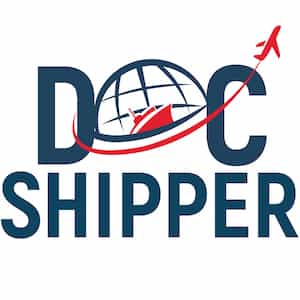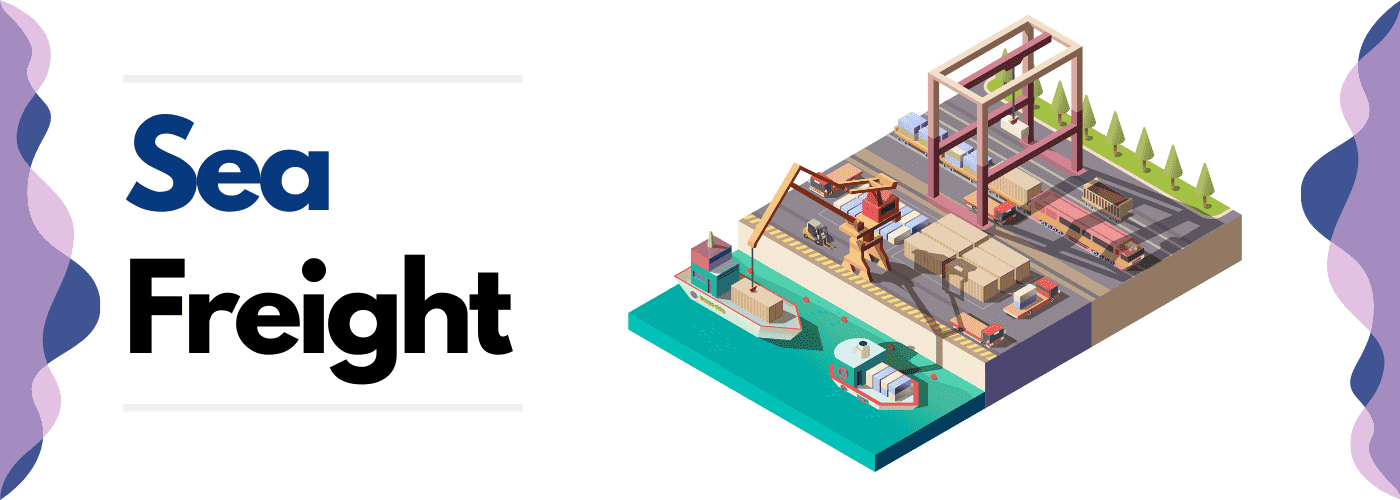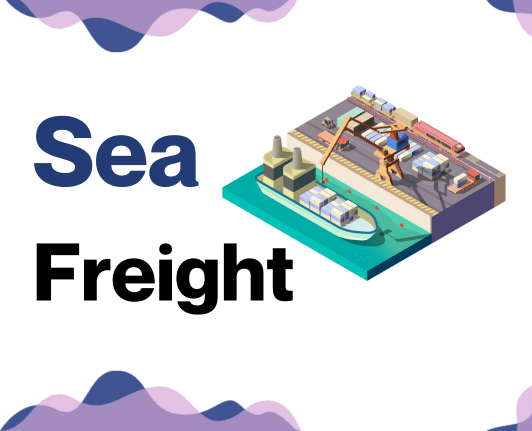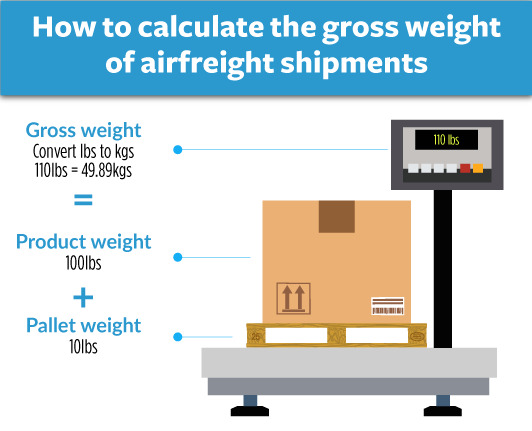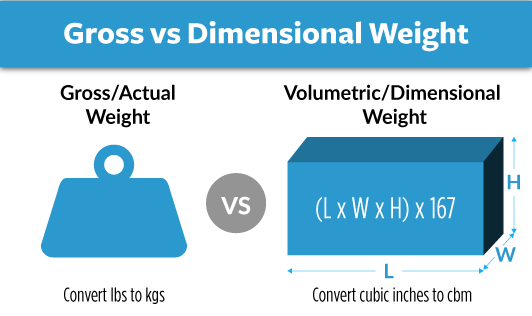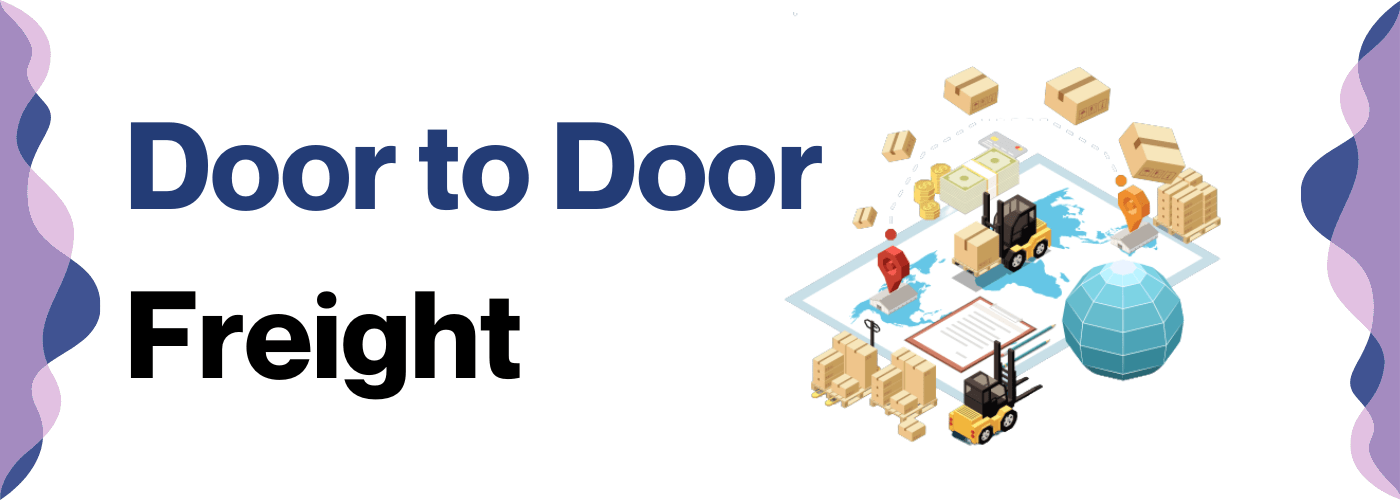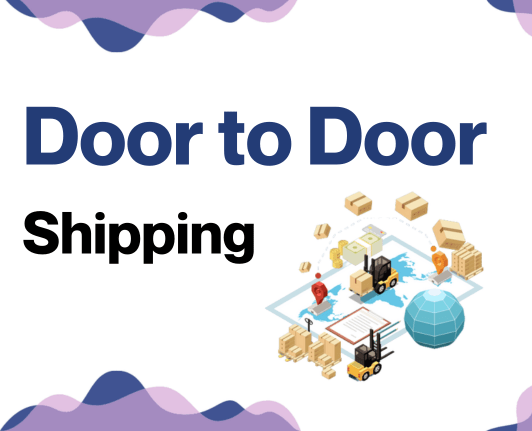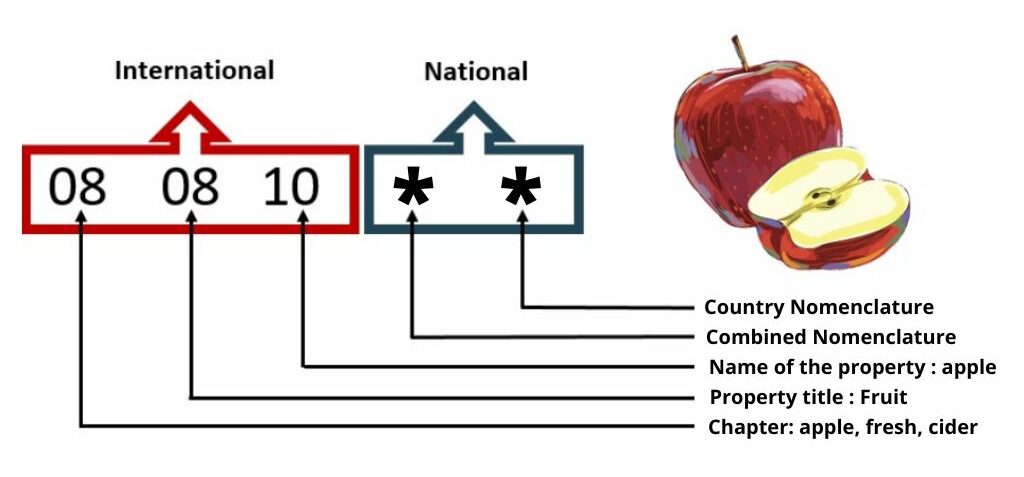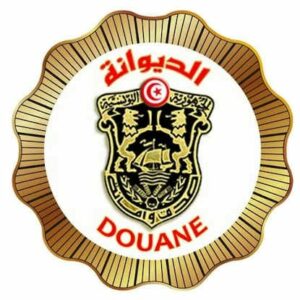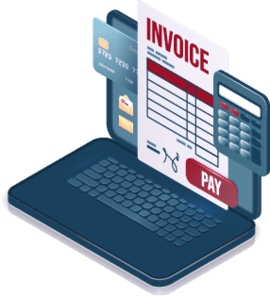Imagine embarking on a sizzling culinary journey from Malaysia's spicy Laksa soup to Tunisia's tasty Couscous, but instead of ingredients, you're trading goods. The complex aspects of international shipping, including deciphering rate systems to understanding customs protocols and estimating transit times, could feel as intimidating as a fierce Durian fruit. Expect this guide to peel off the layers of ambiguity, covering everything from different types of freight options (air, sea, road, rail), customs clearance, duties, and taxes. Essential advice tailored for businesses intending to conquer freight challenges between Malaysia and Tunisia will be laid down in an easily digestible manner. If the process still feels overwhelming, let DocShipper handle it for you! As your go-to international freight forwarder, we're here to smooth out the rough sea of shipping, transforming perceived hassles into your business's ultimate triumphs.
Table of Contents
Which are the different modes of transportation between Malaysia and Tunisia?
Understanding the best way to ship from Malaysia to Tunisia can seem like solving a puzzle because of the vast distance and tricky geography. It's about more than just 'pick and send'. Instead, think of it as a championship game where you have to select the right players - air, sea, road, or rail. Evaluating their speed, cost, and reliability, you craft a winning strategy. Let's delve into these transport options, tackling each's pros and cons, to help you score your goal - swift, secure, and cost-effective shipping between these unique locations.
How can DocShipper help?
Struggling to figure out your goods' journey from Malaysia to Tunisia? Let DocShipper alleviate your stresses. Our seasoned team takes care of every protocol. We are here to handle everything: organizing transport, dealing with customs, you name it! Need a free estimate? We got you covered in less than 24 hours! Not sure yet? Give our consultants a call today!
DocShipper Tip: Sea freight might be the best solution for you if:
- You're dealing with hefty quantities or oversized goods. Sea transport is your go-to for maximizing space without stretching your budget.
- Time sensitivity isn't a concern for your shipment. Ocean freight is known for its leisurely pace, especially when compared to the speed of air or rail.
- Your supply chain connects key international harbors. This positions you to take full advantage of a wide-reaching network of ocean trade routes.
Sea freight between Malaysia and Tunisia
Malaysia and Tunisia share a dynamic trade relationship with ocean shipping playing a pivot role. As the backbone of international trade, it ferries high-volume goods between key industrial centers - Port Klang in Malaysia and Rades Port in Tunisia. But it's not always smooth sailing. Errors transpire. Shipments can get delayed. Unforeseen costs and complex customs procedures often derail even the most meticulously planned logistics. Sea freight, for all its cost-effectiveness, is the tortoise in the race - the slowest among its counterparts.
Getting your shipment from, say Kuala Lumpur to Tunis, feels like completing a puzzle with movable pieces. You must fit together exchange rates, shipping costs, customs duties, paperwork, and more. This section aims to turn these 'puzzling' pieces into a straightforward path, offering a roadmap for a less strenuous, more predictable sea freight experience. This is the detangling of a complex web, your guide to successful sea shipping between Malaysia and Tunisia.
Main shipping ports in Malaysia
Klang is the nation's main port and is frequently referred to for shipping to and from Malaysia. It is located in Selangor, near the capital, Kuala Lumpur which contributes to its strategic importance.
Location and Volume: Located at the western part of Peninsular Malaysia, this port is pivotal in handling the majority of the country's trade volume, processing over 11.9 million TEUs annually.
Key Trading Partners and Strategic Importance: The Port of Klang maintains major trade relationships primarily with China, Singapore, the United States, Taiwan, and Japan. It serves as an essential gateway to the ASEAN Market.
Context for Businesses: If you're looking to tap into the ASEAN or Asian markets, leveraging the capabilities of the Port of Klang could streamline your operations, given its excellent connectivity and high volume capabilities.
Penang Port
Located on the northwest coast, Penang Port is the oldest and longest established port in Malaysia.
Location and Volume: Located on the Malacca Strait, in the state of Penang, this port plays a crucial role in the northern region of Peninsular Malaysia. It processes over 1.5 million TEUs annually.
Key Trading Partners and Strategic Importance: Penang Port's primary trading partners are Singapore, China, Hong Kong, Indonesia, and the United States. The port is also strategically important for the state's thriving electronics industry.
Context for Businesses: If your business is in the electronics sector or trading with the aforementioned countries, Penang Port's strategic location and industry-specific expertise could be of significant benefit.
As one of Malaysia's fastest-growing ports, PTP holds a strategic position on the eastern mouth of the Strait of Malacca.
Location and Volume: Located in the state of Johor, close to the eastern end of the Strait of Malacca, PTP deals with over 9.1 million TEUs annually.
Key Trading Partners and Strategic Importance: PTP's key trading partners include China, Singapore, Europe, and the United States. It is the best line of sea access to Indonesia and the southern parts of Malaysia.
Context for Businesses: If your supply chain involves significant operations in Southern Malaysia or neighbouring Indonesia, PTP's geographical position and fast-growing facilities should be of particular interest.
Bintulu port operates within the Sarawak Corridor of Renewable Energy, revolutionizing exports out of Borneo.
Location and Volume: Positioned in the central region of Sarawak, Bintulu Port handles over 1 million TEUs annually.
Key Trading Partners and Strategic Importance: Key trading partners include China, other ASEAN countries, Australia, and the United States. The port is crucial for the liquefied natural gas (LNG) industry, given its close proximity to the Bintulu LNG Complex.
Context for Businesses: If your enterprise applies to the energy sector, especially LNG, Bintulu Port's facilities and strategic proximity to the Bintulu LNG complex could offer substantial operational advantages.
Miri Port Authority
Known primarily for its oil and gas industries, Miri's port authority administers the port and harbour of Miri and its connected areas.
Location and Volume: Located in the northeast region of Sarawak, it plays a unique role in Borneo's oil and gas industries, handling about 100,000 TEUs annually.
Key Trading Partners and Strategic Importance: Key trading partners are primarily within Malaysia, with some business with Singapore and Brunei. Miri Port significantly contributes to the oil and gas industry.
Context for Businesses: If your focus is on the oil and gas sector, utilising the services of Miri Port could help maintain efficient logistics in Borneo.
Primarily noted for offshore oil and gas operations, this port is tremendously significant for businesses related to energy resources.
Location and Volume: Situated on the Federal Territory of Labuan Island, this port is a free commercial zone and handles around 96,000 TEUs per annum.
Key Trading Partners and Strategic Importance: Key trading partners include China, Singapore, Japan, and Thailand. The Port is an active part of the oil and natural gas supply chains due to its proximity to rich offshore fields.
Context for Businesses: For businesses specifically in the energy resources sector, leveraging the advantages of Labuan Port could offer an easier way to deal with supply chains associated with offshore exploration and drilling activities.
Main shipping ports in Tunisia
Port of Rades
Location and Volume: Located along the northeastern coastline of Tunisia, the Port of Rades is the country's primary shipping hub, boasting a shipping volume of over 700,000 TEU.
Key Trading Partners and Strategic Importance: This port maintains strong ties with various European ports, especially those in Italy and France. It's strategic importance lies in its status as Tunisia's main container port and its proximity to the capital city, Tunis.
Context for Businesses: If you're looking into exporting goods to Mediterranean countries, the Port of Rades is your perfect choice considering its extensive trade network.
Port of Sfax
Location and Volume: Positioned on the eastern coast of Tunisia, the Port of Sfax enjoys major significance in the shipping of phosphates, with an annual cargo loading volume of around 16 million tons.
Key Trading Partners and Strategic Importance: Catering primarily to the Mediterranean and European market, this port holds a strategic importance in handling Tunisia's phosphate exports - a key contributor to the national economy.
Context for Businesses: Businesses involved in the trade of minerals and chemical products may find the Port of Sfax beneficial as it specializes in handling such cargo.
Location and Volume: The northernmost port of Africa, the Port of Bizerte, moves a wide range of cargo, including bulk, general, and containerized goods.
Key Trading Partners and Strategic Importance: The port has key trading relationships across the Mediterranean, particularly with Italy, France, and Spain. It also plays a strategic role due to its diversified cargo handling capability, and its proximity to Europe.
Context for Businesses: If your business demands a swift and varied shipping pipeline to European markets, you might find the Port of Bizerte aligns well with your logistics strategy.
Port of Gabes
Location and Volume: Located in the gulf which bears its name, the Port of Gabes handles cargo related mainly to the chemical industry, notably phosphoric acid and fertilizers.
Key Trading Partners and Strategic Importance: With Europe as its primary market, the port serves as an instrument of economic development within the region, particularly for the chemical industry.
Context for Businesses: Businesses that deal in chemical product exports to Europe may leverage the specific facilities and networks of the Port of Gabes for their shipping requirements.
Port of Sousse
Location and Volume: The Port of Sousse, situated in the Gulf of Hammamet, is key for goods headed for the tourism-related industry, with regular cargoes of general goods.
Key Trading Partners and Strategic Importance: Mainly serving trade routes with Europe and the Mediterranean, the port is of strategic significance in Tunisia's tourism industry.
Context for Businesses: If your business caters to the tourism sector or you're shipping goods that complement this industry, having the Port of Sousse in your logistics plan is advisable.
Port of Skhira
Location and Volume: Positioned on the southeastern coast, the Port of Skhira mainly hosts shipments of crude oil and petroleum products.
Key Trading Partners and Strategic Importance: The port is strategically important as a primary hub for Tunisia's oil exports, serving a network of global contacts, but focusing on Mediterranean and European countries.
Context for Businesses: Businesses with freight related to the petroleum industry should consider using the Port of Skhira due to its specialization and strategic location for oil products.
Should I choose FCL or LCL when shipping between Malaysia and Tunisia?
Choosing between Full Container Load (FCL) and Less than Container Load (LCL), also known as consolidation, is a pivotal decision for shipping goods from Malaysia to Tunisia. It's like picking between booking an entire bus or just needing a couple of seats. Each option has its own implications on cost, delivery time, and overall success. In the following section, we'll dive into the specifics of both options, helping you align your shipping strategy with your business needs. A well-informed choice could be a game-changer; let's figure out your best move.
LCL: Less than Container Load
Definition: Less than Container Load (LCL) shipping, also known as groupage, is a type of ocean freight that consolidates cargo from different shippers into one container.
When to Use: This option is particularly effective in terms of cost and flexibility when dealing with low-volume shipments. If your cargo volume lies between 13 to 15 CBM, LCL shipment is the better alternative.
Example: Suppose a Malaysian furniture exporter needs to ship only a small quantity of chairs to a client in Tunisia amounting to 10 CBM. Due to the lack of adequate volume to justify booking a full container, an LCL freight solution would be the perfect fit, providing cost benefits and flexibility in shipment scheduling.
Cost Implications: The cost of an LCL freight shipment is typically based on the volume (in CBM) or the weight of the cargo, whichever is greater. However, it's important to note that there can be additional costs such as deconsolidation or handling charges at the destination port.
FCL: Full Container Load
Definition: FCL or Full Container Load shipping, refers to hiring an entire container (typically 20'ft or 40'ft) for transporting your goods. The key advantage is that only your goods will occupy this container, bolstering safety as it stays sealed from origin to destination.
When to Use: FCL is a viable choice when the cargo volume is over 13/14/15 cubic meters (CBM). Cheaper for high volume goods, it's safe as the risk of damage or loss is minimized due to the elimination of multiple handling stages.
Example: Suppose you're a car parts manufacturer in Malaysia shipping a high volume of engine components to a factory in Tunisia. To ensure safety and cost-effectiveness, the most suitable option would be an FCL shipment.
Cost Implications: Getting an FCL shipping quote is straightforward. The cost is flat, whether the container is half full or brimming to the top. While the initial expense is higher than its counterpart, LCL (Less Container Load), FCL shipping proves cost-effective for larger volumes due to the per unit pricing. Keep in mind additional fees may apply like detention and demurrage for prolonging use of the FCL container beyond the agreed timeframe.
Unlock hassle-free shipping
Are you puzzled over choosing consolidation or a full container for your Malaysia-Tunisia shipment? DocShipper is here to erase the doubt. Our ocean freight experts specialize in guiding businesses towards a hassle-free shipping experience. They'll assess the volume of your shipment, budget, and time constraints to recommend the best fit for your needs. Don't navigate this path alone; discover the seamless service of DocShipper. Connect with us for a free cargo shipping estimation today!
How long does sea freight take between Malaysia and Tunisia?
On average, sea freight between Malaysia and Tunisia takes approximately 30-45 days. These transit times consider factors such as the specific ports used, the weight of shipments, and the nature of the goods being transported. Given the complexity and variation, for a more precise timeframe tailored to your specific shipping needs, it's advisable to reach out to a freight forwarder, such as DocShipper.
Following is a table showing estimated transit times (in days) between the main ports of the two countries.
| Tunisian Ports | Malaysian Ports | Transit time (in days) |
| Port of Rades | Port of Klang | 25 |
| Port of Bizerte | Port of Johor | 25 |
| Port of Gabes | Port of George Town | 27 |
| Port of Sfax | Port of Kuantan | 28 |
*Please note that these are average, ballpark figures and actual shipping times may differ. Contacting a freight forwarder will assure you accurate transit times for your specific shipment.
How much does it cost to ship a container between Malaysia and Tunisia?
While ocean freight rates between Malaysia and Tunisia fluctuate considerably, you can estimate anything from a very broad range per CBM. This variation one finds in shipping costs stems from several dynamic factors - Points of Loading and Destination, carrier preferences, nature of your goods, and the unpredictable tide of monthly market ebbs and flows. It's not feasible for us to pin down an exact figure off the bat. However, we rest our assurance on tailoring these costs to your unique needs. Our proficient shipping specialists will collaborate with you, quoting on an individual basis, ensuring you get the best price point. After all, shipping is not a one size fits all process, is it?
Special transportation services
Out of Gauge (OOG) Container
Definition: An OOG container is a special shipping service for out-of-gauge cargo that exceeds the dimensions of standard containers.
Suitable for: Large equipment, machinery, and oversized components that do not fit into regular containers.
Examples: Excavators parts, wind turbines, or boat hulls.
Why it might be the best choice for you: If you have cargo that can't be dismantled to fit in a standard container, utilizing an OOG container would be ideal, as they can cater to a wide range of dimensions.
Break Bulk
Definition: Break bulk refers to shipping goods individually, often on a pallet or in a crate, rather than in a container.
Suitable for: Oversized items, heavy loads, and equipment that needs cranes for loading.
Examples: Industrial machinery, mining equipment or steels beams.
Why it might be the best choice for you: The flexibility of break bulk allows for delivery of goods in different shapes and sizes, making it the optimal choice for businesses with hefty or irregularly shaped goods.
Dry Bulk
Definition: Dry bulk refers to materials in granulated or powdered form transported in large quantities without packaging, typically in a loose cargo load.
Suitable for: Bulk materials such as grain, coal, or sand.
Examples: Agriculture products, construction materials, or minerals.
Why it might be the best choice for you: If your business deals with high volumes of loose raw materials, dry bulk gives you the most cost-effective and efficient shipping solution.
Roll-on/Roll-off (Ro-Ro)
Definition: A Ro-Ro vessel is one where vehicles are driven directly onto the ship and secured within the hull.
Suitable for: Motor vehicles, tractors, trailers, railways wagons, or anything else that can move on its wheels.
Examples: Cars, trucks, or buses.
Why it might be the best choice for you: For automotive manufacturers or traders, the Ro-Ro option could be the perfect solution for your shipping needs due to its simple logistics and flexibility.
Reefer Containers
Definition: Refrigerated containers or reefer containers are temperature-controlled containers designed for shipping perishable goods.
Suitable for: Foods, medical supplies, fruits, meat, fish, or any other items that require a certain temperature.
Examples: Seafood, ice cream, or pharmaceuticals.
Why it might be the best choice for you: If you are in the business of temperature-sensitive goods, reefer containers guarantee the safe and fresh delivery of your products to their destination.
Better understand your options by reaching out to DocShipper. Our team is equipped to guide you through these various options, help you make an informed decision and provide you a free shipping quote within 24 hours.
DocShipper Tip: Air freight might be the best solution for you if:
- You're pressed for time or facing a non-negotiable deadline. Air freight delivers unparalleled speed when it comes to transit times.
- Your shipment is modest in size, falling under 2 CBM. Air freight is particularly well-suited for these smaller consignments.
- Your supply chain includes destinations that are off the beaten maritime or rail paths. Air freight gives you access to a comprehensive global airport network.
Air freight between Malaysia and Tunisia
Experience the speed and reliability of air freight when trading goods between Malaysia and Tunisia! Suppose you're dealing with small, precious cargo - say, a batch of cutting-edge electronics, or unique handmade crafts. Air freight becomes your winning ticket, delivering your items swiftly and efficiently. One key benefit is that it can be surprisingly cost-effective. The catch is knowing how to avoid the common pitfalls.
Did you know a lot of businesses overpay due to simple errors, like using the wrong weight formula when calculating shipping costs? Or by overlooking best practices that could save them a small fortune? Let's explore these mistakes and how to prevent them. Making your journey as a shipper smoother than ever— it's almost like rolling a suitcase through the airport instead of hauling a heavy crate.
Air Cargo vs Express Air Freight: How should I ship?
Navigating the journey of goods from Malaysia to Tunisia? Your choice between air cargo and express air freight could make all the difference. Think of it this way: air cargo is a shared ride in a commercial airliner with other goods, while express air freight is your priority pass to a dedicated plane– faster, but pricier. So, buckle up as we dive deeper into these options to find the best fit for your business logistics needs.
Should I choose Air Cargo between Malaysia and Tunisia?
Looking to ship goods between Malaysia and Tunisia? Air cargo could be your most cost-effective and reliable option. It's particularly suitable for freight exceeding 100/150 kg (220/330 lbs), making it increasingly attractive. Airlines such as Malaysia Airlines and Tunisair serve this corridor, ensuring top-tier service. However, longer transit times due to fixed schedules must be considered. Check out the official websites of Malaysia Airlines and Tunisair for more details. Thus, if you're seeking dependability and have budgetary room, air cargo might fit your bill.
Should I choose Express Air Freight between Malaysia and Tunisia?
When it comes to fast, efficient shipping, Express Air Freight stands out. Tailored for cargo up to 1 CBM or 100-150 kg (220-330 lbs), it utilizes dedicated freight planes - no passengers, just your goods. Need to send electronics from Kuala Lumpur to Tunis swiftly? Express Air Freight through companies like FedEx, UPS, or DHL could be your best bet. You get speedy delivery and tracking features ensuring visibility. Consider this option for its promptness and simplicity, particularly for your lighter shipments.
Main international airports in Malaysia
Kuala Lumpur International Airport
Cargo Volume: Kuala Lumpur International Airport handles over 700,000 metric tons of cargo annually.
Key Trading Partners: The airport's principal partners include China, the United States, and Singapore.
Strategic Importance: Sitting in the heart of the Asia Pacific region, it serves as a gateway to both East and South East Asia. Importantly, KLIA provides a crucial link in the supply chain of high-tech industries such as electronics and semiconductors.
Notable Features: KLIA operates a Cargo Complex called 'Advanced Cargo Centre' that is equipped with state-of-the-art facilities for efficient cargo handling.
For Your Business: If you require robust and reliable cargo transportation to and from East and South East Asia, KLIA's advanced cargo handling facilities, strategic location, and strong connections with major trading nations make it an excellent choice for accelerating your global supply chain operations.
Cargo Volume: Penang International Airport processes roughly 175,000 metric tons of cargo per year.
Key Trading Partners: Some of its key partner countries include Japan, Hong Kong, and the United States.
Strategic Importance: Located at the Northern region of Peninsular Malaysia, it offers good access to Asia, Europe, and the Americas. The airport supports the Northern Corridor Economic Region - a development initiative aimed at changing northern Malaysia into a world-class economic region.
Notable Features: The airport is particularly renowned for accommodating a significant number of cargo-only freighter services, making it notable for freight-forwarding.
For Your Business: If your business is involved in high-value manufacturing sectors, Penang International Airport's numerous cargo-only services and its strategic position within a world-class economic region could provide significant benefits to your delivery times and logistical parameters.
Cargo Volume: Senai International Airport manages close to 10,000 tons of air cargo per year.
Key Trading Partners: The airport primarily deals with ASEAN countries, China, and the Middle East.
Strategic Importance: As the only airport in southern Peninsular Malaysia that supports cargo and passengers, the Senai International Airport plays a crucial role in propelling the region's industrial and commercial growth.
Notable Features: Senai International Airport is home to many global courier companies and its cargo village concept is unique in Malaysia.
For Your Business: If your business is specifically looking for comprehensive cargo services and facilities in the southern region of Malaysia, Senai International Airport's cargo village and its position as a significant regional logistics hub could provide you with additional business growth opportunities.
Remember, choosing the right airport for your business largely depends on your unique requirements and specific needs. Being fully aware of each airport's strengths and how they align with your business model will help you to make the best possible decision for achieving efficient and effective shipping results.
Main international airports in Tunisia
Tunis-Carthage International Airport
Cargo Volume: Tunis-Carthage is Tunisia's busiest airport managing a significant portion of the cargo - toppling over 22,000 tons per year.
Key Trading Partners: Some key trading partners include France, Germany, Italy, and Spain.
Strategic Importance: As the capital city's airport, Tunis-Carthage is extremely vital, connecting Tunisia to many European, African, and Middle Eastern destinations.
Notable Features: The airport features a specialized cargo village, allowing for efficient cargo handling and management.
For Your Business: If your business regularly deals with European, African, or Middle Eastern markets, this airport's expansive network and exceptional handling capabilities can help streamline your shipping operations.
Monastir Habib Bourguiba International Airport
Cargo Volume: Habib Bourguiba averages around 3,000 tons of cargo annually.
Key Trading Partners: Key trading partners are largely European nations including France, Germany, and the UK.
Strategic Importance: Habib Bourguiba provides a strategic link to the coastal areas of Tunisia, making it a valuable port for export companies.
Notable Features: The airport's efficient logistics hub supports businesses with specialized requirements.
For Your Business: If your business operates within a sea-air transport model or relies heavily on European trade, Habib Bourguiba may well serve as an effective gateway to your shipping needs.
Enfidha – Hammamet International Airport
Cargo Volume: Enfidha – Hammamet handles over 2,500 tons of cargo per year.
Key Trading Partners: The airport regularly ships to notable destinations such as Frankfurt and Paris.
Strategic Importance: Geographically, Enfidha – Hammamet is positioned at the center-east of Tunisia, providing access to key industrial areas.
Notable Features: Enfidha – Hammamet features modern handling equipment and warehousing facilities.
For Your Business: With its central positioning and modern facilities, Enfidha – Hammamet is geared to ensure a smooth cargo shipping process, especially if your business targets key European markets.
Sfax–Thyna International Airport
Cargo Volume: This airport manages a cargo volume of approximately 2,000 tons per annum.
Key Trading Partners: The airport primarily trades with European and Middle Eastern countries.
Strategic Importance: Sfax–Thyna offers businesses in the southern part of Tunisia a connecting hub for their exports.
Notable Features: The airport, although smaller in scale, is equipped to handle heavy cargo and offers bespoke logistics solutions.
For Your Business: If your shipping operations are based in South Tunisia, this airport's geographic location and bespoke logistics could potentially simplify your supply chain and reduce transport time.
Djerba–Zarzis International Airport
Cargo Volume: This airport handles around 1,500 tons of cargo per year.
Key Trading Partners: Key trading partners include France, Germany, and other EU countries.
Strategic Importance: Djerba–Zarzis serves the island of Djerba and surrounding areas and plays a significant role in transporting seafood exports.
Notable Features: Due to its island location, Djerba–Zarzis offers unique fresh-seafood transportation facilities.
For Your Business: If your operation orbits around seafood or perishables, Djerba–Zarzis' specialised handling capabilities could prove instrumental for preserving the quality of your goods during transport.
How long does air freight take between Malaysia and Tunisia?
On average, air freight shipping duration between Malaysia and Tunisia spans approximately 3-8 days. This estimate, however, can fluctuate due to determining factors such as the specific airports of origin and destination, the weight of the goods being transported, and their distinctive nature. To obtain the most precise and up-to-date information about your shipment, consulting with an experienced freight forwarder like DocShipper is highly recommended.
How much does it cost to ship a parcel between Malaysia and Tunisia with air freight?
Air freight costs between Malaysia and Tunisia typically range from $2.5 to $5 per kilogram. However, this is a general ballpark and the final cost can vary substantially. Factors such as the distance between departure and arrival airports, parcel size and weight, and the nature of the goods all play a role in determining the final price. Our dedicated team works diligently to provide you with the most competitive rates, we quote on a case-by-case, ensuring each shipment receives a tailored, optimized solution. So why wait? Contact us now and receive a free quote in less than 24 hours.
What is the difference between volumetric and gross weight?
Gross weight refers to the total cargo weight, including the weight of the goods and its packaging. Volumetric weight, on the contrary, takes into account the size of the package and its density.
In Air cargo, gross weight is simply the weight measured on a scale. If you have a package that weighs 350 kg, then that's your gross weight. In pounds, this is approximately 771.62 lbs.
On the other hand, volumetric weight is a little tricky. It's calculated by multiplying the package's length, width, and height (in cm), and dividing by 6,000. For instance, if your package is 100cm x 100cm x 100cm, the volumetric weight would be 166.67 kg. Converting this to pounds, we get approximately 367.42 lbs.
Express Air Freight follows a slightly different method. The volumetric weight is calculated by multiplying the package's length, width, and height (in cm), and dividing by 5,000. For the same package of 100cm x 100cm x 100cm, the volumetric weight would be 200 kg or roughly 440.92 lbs.
The higher value between your gross and volumetric weight is crucial. Freight companies charge based on this principle because space on an aircraft is just as valuable as the weight it carries. If your shipment takes up lots of space but weighs little, you'll likely pay for the size rather than the actual weight. Understanding this helps you optimize your packaging and potentially save on freight costs.
DocShipper tip: Door to Door might be the best solution for you if:
- You value convenience and want a seamless shipping process, as door-to-door takes care of every step from pickup to delivery.
- You prefer a single point of contact, as door-to-door services typically provide a dedicated agent to handle all aspects of the shipment.
- You want to minimize the handling of your goods, reducing the risk of damage or loss, as door-to-door minimizes transitions between different modes of transport.
Door to door between Malaysia and Tunisia
Sailing across the seas or floating through the airwaves might not be your shipping style. Rather, you prefer a seamless, hassle-free process. This is where International Door to Door shipping shines, moving your goods all the way from Malaysia to Tunisia. Offering convenience, simplicity, and the joy of no interruptions, you're in for a smooth ride. So buckle up, let's dive into the world of Door to Door shipping!
Overview – Door to Door
When shipping goods from Malaysia to Tunisia, complexity comes as standard. However, our clients often favor the stress-free approach of our Door-to-Door service. Why? It covers everything from the start, like pick-up in Malaysia, to delivery in Tunisia, simplifying customs procedures and tackling logistic hassles head-on. The downside? Maybe slightly pricier, but ask yourself – isn't your peace of mind worth it? Overcome your shipping challenges and see why so many DocShipper’s clients opt for this comprehensive solution. So, lets dive in and explore how this service could be your smart logistics antidote.
Why should I use a Door to Door service between Malaysia and Tunisia?
Ever juggled flaming torches while tap dancing on a tightrope? No? Well, that's what managing international shipping can feel like at times! Here are five compelling reasons why you should consider a Door to Door service between Malaysia and Tunisia.
1. Stress-Free Experience: Shipping will no longer feel like a circus act with this service. It will handle everything from goods pickup to delivery, leaving you free to focus on your core business.
2. Timely Delivery: Punctuality is more than a virtue in shipping; it's a necessity. When you've got urgent shipments, Door to Door services expedite the entire process, ensuring your goods reach Tunisia right on schedule.
3. Specialized Cargo Handling: Complex cargo going to Tunisia? Nothing to worry about. Door to Door services offer expert handling of your goods, managing all the intricacies to ensure that your shipment arrives safe and sound.
4. Streamlined Process: Imagine making a cake with one ingredient. Sounds easy, right? That's Door to Door service for you. Get all your logistics needs under one umbrella, removing the need to juggle multiple service providers.
5. Convenience: Whether it's a bustling city center or a remote location, Door to Door services promise ease and efficiency. Everything, including trucking, is handled until the final destination, making this service list’s epitome of convenience.
In essence, Door to Door services are like having your own personal logistic magician, making your shipping stress melt away!
DocShipper – Door to Door specialist between Malaysia and Tunisia
Unsure about door-to-door shipping between Malaysia and Tunisia? Hand over your stress to DocShipper. With our adept services, we oversee the entire shipping process. From packing to customs clearance, across any transport method, we've got you covered. Plus, you benefit from a dedicated Account Executive to streamline your operations. Contact us now for a free estimate within 24 hours, or take advantage of a free consultation with our shipping experts. Trust DocShipper to make freight forwarding a breeze.
Customs clearance in Tunisia for goods imported from Malaysia
Mastering customs clearance, the dynamic process of getting your goods approved to enter or leave a country—is critical yet complex when importing goods from Malaysia to Tunisia. It can be a landmine of unexpected fees and charges if not handled correctly. Knowing the nitty-gritty of customs duties, taxes, quotas, and licenses is essential; otherwise, your goods risk being stuck indefinitely in customs. DocShipper has the expertise to manage this process, ensuring your goods go anywhere, regardless of their type. Contact our team with your goods' origin, value, as well as the HS Code to get the ball rolling. Get ready to dive deeper into this process in the following sections. Rest assured, we'll guide you every step of the way.
How to calculate duties & taxes when importing from Malaysia to Tunisia?
Navigating the maze of import duties and taxes can seem daunting, but don't worry—we're here to break it down for you step-by-step. To accurately determine your import costs, you'll need to gather a few crucial pieces of information including the country of origin, the Harmonized System (HS) Code of the product, its customs value, and the applicable tariff rate, not to overlook other potential taxes and fees linked to your particular product.
Think of these as the building blocks for your customs calculation. The first brick to place, however, is identifying the country where your goods were actually manufactured or produced. This factor directly impacts duty rates and establishes the groundwork for your ensuing customs calculations. The right information from the start can save you costly surprises and delays, making your import process from Malaysia to Tunisia smoother and more predictable.
Step 1 - Identify the Country of Origin
Identifying the Country of Origin is much like laying the foundation brick when you ship goods from Malaysia to Tunisia. Here's why it's crucial even before fetching your Harmonized System (HS) code:
1. Trade Agreements – Malaysia and Tunisia may share specific trade terms that can alter your customs duties.
2. Tariffs – The Country of Origin plays a key role in determining the applicable duty rates on your goods.
3. Import Restrictions – Certain goods may face a ban or quota restrictions due to origin-based laws.
4. Anti-Dumping Duties – These are usually targeted at specific nations.
5. Ease of Clearance - Knowing the country of origin can ease the customs clearance process.
Check trade agreements such as the Generalized System of Preferences (GSP) to determine if you can benefit from any duty reductions. Always stay updated with the Tunisian importation restrictions. For example, if you're looking to export second-hand items, Tunisia has strict regulations on the importation of used goods. We recommend that you check with your local agent or authorities before shipping. So, kick off on the right foot; get that Country of Origin right!
Step 2 - Find the HS Code of your product
Understanding the Harmonized System (HS) Code of your goods is a critical step in international trade. The HS Code is a standardized international system for classifying globally traded products. It informs customs about the type of product imported for administrative, statistical, and duty assessment purposes.
Often, the quickest way to identify your product's HS Code is to ask your supplier. Suppliers are typically experienced with their products and are aware of the relevant import regulations and classifications.
However, in circumstances when you can't obtain the code from your supplier, don't worry. It's fairly straightforward to find the HS code yourself using an online lookup tool. We recommend the Harmonized Tariff Schedule.
To use this tool to find your HS Code, simply follow these steps:
1. Visit the Harmonized Tariff Schedule website.
2. Input the name of your product in the search bar.
3. On the results page, look in the Heading/Subheading column to find your HS Code.
For accurate and swift clearance at customs, paying attention to detail is essential when selecting your HS Code. A simple error could lead to detention delays in customs or even potential fines. So, remember to ensure your HS Code is accurate.
Here's an infographic showing you how to read an HS code. This guide will take you through each section of the code and provide a comprehensive understanding of its structure for future use.
Step 3 - Calculate the Customs Value
Got it. When you're importing goods from Malaysia to Tunisia, the customs value is a key element that determines how much duty you'll pay. It's the total CIF value (Cost, Insurance, and Freight), not simply the price of your goods. Imagine you have a product that costs $100. Add in $20 for insurance and another $30 for shipping, your customs value would be $150. It's this comprehensive amount, not your product's original price, that the Tunisian customs authorities will apply tariffs to. Hence, understanding how to calculate CIF is critical for accurate duty payments and to avoid surprise costs when your shipment arrives. It may seem complex, but once you break it down, it's fairly straightforward. Remember, transparency is key to a smooth customs clearance process.
Step 4 - Figure out the applicable Import Tariff
Import tariffs - often known as customs duties - are taxes charged on imported goods and services, implemented to protect domestic industries and maintain economic balance. Tunisia adopts the Harmonized System (HS), this universal method helps identify your item's classification for tariff purposes.
Here's how to determine the applicable import tariff for your goods:
1. Visit Tunisia's Tariff-related website or consult with a local customs broker to get authoritative information about your product's HS code. Let's say your product is a watch, which falls under the HS code 9102.
2. With your identified HS code, you can locate the correct tariff in Tunisia's Tariff Schedule, please find yourself a professional to help you if necessary.
3. Take note of the percentage associated with your product's HS classification - this is your import tariff rate. For example, a watch may carry a tariff rate of 30%.
Next, to calculate the customs duty, you'll need to know the Cost, Insurance, & Freight (CIF) value of your goods. If the CIF value of your watches is $5,000 (in USD), the import duties calculation becomes straightforward:
$5,000 (CIF) x 30% (Tariff Rate) = $1,500
Hence, $1,500 would be your import duty payable to Tunisian Customs. Armed with this knowledge, you can better plan and budget your shipment prior to the shipment's scheduled arrival. This process requires a good understanding of your product and local tariffs. Don't hesitate to seek professional help in navigating these intricacies.
Step 5 - Consider other Import Duties and Taxes
As an international shipper, understanding that standard tariff isn't the only charge is crucial. Besides this, other import duties can apply, altering your cost calculation significantly. They vary based on your product and its specific origin country.
Take excise duty, imposed primarily on items like alcohol, tobacco, and fuel. If you're shipping premium Malaysian whiskey to Tunisia, an excise duty might apply, increasing your total cost. Or consider anti-dumping taxes. If Malaysia, for instance, is suspected of selling steel at unfairly low prices, a tax might be imposed to protect Tunisian companies.
The most prevalent of all is Value Added Tax (VAT). Let's say you've shipped goods worth $5000 with a VAT rate of 19%. Your payable VAT becomes $950 (500019/100). This becomes part of your landing cost and should be integrated into your pricing strategy.
Remember, these are just illustrative figures; actual amounts will depend on specific situations. Stay ahead of these unanticipated costs to ensure smooth sailing of your goods and healthy profits. Always consult a local customs agent or your freight forwarder for precise calculations.
Step 6 - Calculate the Customs Duties
Understanding how to calculate customs duties for goods shipped from Malaysia to Tunisia can provide a clearer picture of your total shipping costs. Key elements to consider are the customs value of your goods, Value Added Tax (VAT), Anti-Dumping taxes, and Excise Duty.
In the first scenario, let's assume your goods have a customs value of $1000. If Tunisia's customs duty is 10%, your total customs duty would be $100. Here, VAT isn't applied.
For the second scenario, we'll consider VAT. If your goods have a customs value of $2000 with a 10% duty, your duty is $200. When VAT of 18% applies, it's calculated on the sum of the customs value and duty ($2200), resulting in $396 of VAT. Your total customs costs would hence be $596.
Lastly, contemplate customs duty, VAT, Anti-Dumping taxes, and Excise duty. For goods valued at $3000, with a 10% duty, you'd pay $300. With the VAT at 18%, resulting in $594, and an Anti-Dumping Tax of 4%($120), you would pay $1014 customs duties. If Excise Duty of 5% ($150) applies, your final duties are $1164.
Remember, customs clearance can present unforeseen challenges. With DocShipper, you're assured expert handling of all your goods. We understand the intricate matrix of translating customs values into final costs. We ensure you're not charged more and your customs clearances are seamless wherever you are in the world. Contact us today for a quick, free quote within 24 hours.
Does DocShipper charge customs fees?
Clearing up confusion! As a customs broker in Malaysia and Tunisia, DocShipper doesn't levy any customs duties. We handle customs clearance fees—a different kettle of fish from duties and taxes, which go straight to the government. Fear not, you'll only pay what's demanded by customs and we'll provide documents to prove that. Imagine it like a restaurant: DocShipper is the waiter serving you (customs clearance fees), but the government is the restaurant keeping your dish hot (customs duties). It's all about making sure your goods get through without a hitch. Transparency is key to us, and your bank balance!
Contact Details for Customs Authorities
Malaysia Customs
Official name: Royal Malaysian Customs Department
Official website: https://www.customs.gov.my/en
Tunisia Customs
Official name: Tunisian Customs Administration
Official website: http://www.douane.gov.tn/
Required documents for customs clearance
Sailing through customs can feel like braving rough seas. With documents like the Bill of Lading, Packing List, Certificate of Origin, and Documents of Conformity (CE standard) all necessary, this pivotal stage can be a real whirlwind. Dive in as we untangle this complex process, aiding you to secure smooth passage for your goods across borders.
Bill of Lading
Navigating the shipping world between Malaysia and Tunisia, the Bill of Lading is your key asset. It's an official document detailing cargo type, quantity, and the shipper-receiver handshake, marking a critical transition of ownership. Need to speed up the process? Go for the 'telex' release, an electronic alternative that eliminates physical paperwork handovers, making things more efficient. And if you're utilizing air transport, an Air Waybill (AWB) acts as your Bill of Lading's airborne cousin. They are similar but AWB, unlike the Bill of Lading, doesn't indicate ownership. Remember, in the international shipping theatre, your ticket to success lies in understanding these valuable documents, keeping a strict eye on detail, and harnessing the power of digitization to make your shipping journey smoother.
Packing List
Navigating shipping between Malaysia and Tunisia can be a complex process, but your Packing List should never add to the confusion. This document is a key player, detailing your shipment's content, weight, and dimensions crucially needed for calculating shipping costs and ensuring smooth customs clearance. If you're shipping by sea, remember the shipping line requires your Packing List for preparing the Bill of Lading, oversights could lead to costly delays. For air shippers, an accurate Packing List is vital for weight checks and assigning correct air freight charges. Picture this: if you're shipping 500 handcrafted clay pots from Kuala Lumpur to Tunis, it's not just 'clay pots' on your list, it's the exact number, individual weight, and dimensions. Attention to detail and accuracy lightens your load and makes that Malaysia-Tunisia freight journey much smoother.
Commercial Invoice
Commercial Invoices are vital for customs clearance between Malaysia and Tunisia. At its core, this document states the goods' value, provides detailed product descriptions, and mentions the consignee and shipper. Its primary purpose is determining the customs duties. For smooth clearance, ensure all product descriptions align with those on the Bill of Lading and Packing List. Looking to ship textile products from Tunisia? Your Commercial Invoice must specify the fabric type and the thread count. Dealing with electronics from Malaysia? The details about the model and serial numbers are essential. Proper documentation holds the key to a stress-free shipping experience!
Certificate of Origin
Navigating the shipping route from Malaysia to Tunisia? Included in your essential documents should be the Certificate of Origin. This paper tells customs that your goods were manufactured in a specific nation - in this case, Malaysia. It's not just a bureaucratic formality. An accurate Certificate of Origin can unlock preferential customs duty rates, greatly reducing your shipping expenses. For instance, if you’re exporting electronics manufactured in Kuala Lumpur to Tunis, detailing the Malaysian origin on your certificate can mean a substantial cut in duties. Every penny saved empowers your business growth and competitiveness. So, don't neglect this crucial document - it could be the key to smarter economic shipping.
Certificate of Conformity (CE standard)
When shipping goods from Malaysia to Tunisia, your products need to comply with CE standards to sail through customs without hiccups. This isn't just a quality assurance stamp; it's an obligatory certification for products entering the European market, signaling conformity with health, safety, and environmental protection norms. Although Tunisia isn't technically part of Europe, it recognizes the CE mark, making your passage easier. You'll notice similarities with requirements like FCC Declaration of Conformity in the US, but remember, CE is the key here. To avoid unnecessary delays, ensure your goods bear this mark before shipping off to Tunisian shores. As you venture into such nuances of international freight, having authentic certifications in place can make your shipping journey smooth.
Get Started with DocShipper
Navigating the labyrinth of customs clearance between Malaysia and Tunisia can be daunting. Switch the stress for serenity by trusting DocShipper to handle each step meticulously. We manage every detail for swift, hassle-free clearance. Ready to simplify your shipping experience? Contact us today for a free, no-obligation quote within 24 hours. Your peace of mind in international shipping is just one click away.
Prohibited and Restricted items when importing into Tunisia
Moving goods into Tunisia? Stay in the clear by understanding what's prohibited and restricted. Avoid unexpected fines and shipment delays by knowing what can't cross the border. We've got your back with this comprehensive guide. Let's lift the veil on the do's and don'ts of Tunisian imports.
Restricted Products
- Pharmaceuticals: You'll need to get a permit from the Ministry of Health.
- Firearms and Ammunition: To import these, you must secure a permit from the Ministry of Interior.
- Chemicals: For this, you have to apply for a permit at the Ministry of Industry, Energy, and Mines.
- Plants and plant products: You'll need a Phytosanitary Certificate from the Ministry of Agriculture, Fisheries, Water Resources, and Hydraulic.
- Animal products: For these, you have to apply for a Veterinary Health Certificate from the Ministry of Agriculture, Fisheries, Water Resources, and Hydraulic.
- Radioactive substances: You have to secure a permit from the National Centre for Nuclear Sciences and Technologies.
Remember, this is not a comprehensive list, and the customs regulations in Tunisia can change without notice. Therefore, always make sure to check the respective websites for updates before shipping any goods.
Prohibited products
- Narcotics and other illegal drugs: These comprise any substance that is considered illegal or controlled under Tunisian law.
- Pornographic items and materials: This includes any print, video, or digital media content considered explicit or adult-themed.
- Counterfeit goods or currency: Any items that infringe intellectual property rights or unreal currency are prohibited.
- Prescription drugs without valid medical prescription: Medications that require a doctor's prescription are not permitted without proper authorization.
- Unlicensed firearms and explosives: Weapons and explosives are strictly controlled, and any that are unlicensed or unauthorized are forbidden.
- Plants and seeds: Certain plants and seeds can harm the local ecosystem, and so, their import is limited.
- Ivory and products made from endangered animals: This is to prevent the trade in threatened species.
- Toxic and other harmful substances: Any materials that pose a threat to public safety due to their toxic or harmful nature.
Are there any trade agreements between Malaysia and Tunisia
Indeed, Malaysia and Tunisia have various trade agreements in place. While there's currently no explicit Free Trade Agreement (FTA) or Economic Partnership Agreement (EPA), many bilateral agreements encourage smoother cooperation, including economic and technical aid. On-going talks under the Malaysia-Tunisia Joint Trade Committee hint at boosting trade ties. Innovative projects like the proposed 'Trans-Maghreb' railway line could also open new avenues for trade. Considering these, navigating your shipping strategy between these nations may offer promising opportunities.
Malaysia - Tunisia trade and economic relationship
Malaysia and Tunisia share a vibrant trade relationship , marking a surge in bilateral trade. Key sectors include petroleum, electronics, textiles and manufacturing, with Malaysia being Tunisia's largest Asian trading partner. Major milestones include the establishment of the Malaysian Industrial Park in Tunisia in 2008. Investments between the two nations are substantial.
Tunisia Exports to Malaysia was US$23.5 Million during 2022, according to the United Nations COMTRADE database on international trade. Tunisia Exports to Malaysia - data, historical chart and statistics - was last updated on July of 2024.
Your Next Step with DocShipper
Shipping between Malaysia and Tunisia can be daunting due to unpredictable customs policies and a long list of paperwork. Avoid these challenges by letting DocShipper's expert team manage all your shipping needs – from prompt transport organization to seamless customs clearance. Your business deserves efficient, worry-free logistics. Connect with us today for a superior shipping experience.
Additional logistics services
Alongside shipping and customs clearance, discover how DocShipper deftly manages your entire supply chain, providing seamless, worry-free logistics solutions. You focus on your business, we handle the rest!
Warehousing and storage
Finding a reliable warehouse for your goods can feel like quite the task! If you're shipping temperature-sensitive items from Malaysia to Tunisia, the right conditions are everything. To handle this tricky area, consider using dedicated warehousing solutions. By doing so, your stock is treated with the utmost care and precision. Crazy right? Learn more about how we can help on our dedicated page: Warehousing.
Packaging and repackaging
Shipping between Malaysia and Tunisia demands meticulous packaging to ensure your products’ safety during transit. Rely on our trustworthy agents to customize your packaging and repackaging needs, whether it's fragile porcelain or robust automobile parts. Like how we once secured a batch of delicate handcrafted pottery with bubble wrap followed by custom crating. More info on our dedicated page: Freight packaging.
Cargo insurance
With cargo insurance, your goods aren't just another item in the shipping vessel, they're protected assets. Unlike fire insurance, which shields only against fire mishaps, cargo insurance considers the unpredictability of international transport. Whether it's sea waves drenching your goods or rough roads damaging them, cargo insurance offers a safety net. Think of it like a helmet for your cricket match, preventing head injuries. More info on our dedicated page: Cargo Insurance.
Supplier Management (Sourcing)
Planning to do business between Malaysia and Tunisia but daunted by sourcing difficulties? DocShipper eases the process, finding reliable suppliers in high-potential regions like Asia and East Europe. Say goodbye to language barriers and let our expertise guide you through procurement. Real-world example? A local Tunisian coffee shop sourcing premium tea leaves from Asia. Always have the upper hand in your business. More info on our dedicated page: Sourcing services.
Personal effects shipping
Facing a move from Malaysia to Tunisia with bulky or fragile items? Put your worries aside! We've got specialized professionals who handle your prized possessions with the utmost care. Whether it's a treasured home library or your grand piano, our team assures a smooth, stress-free transition. Curious about our process? Head over to our dedicated page to learn how we make moving feel easy: Shipping Personal Belongings.
Quality Control
Quality inspections are vital when shipping from Malaysia to Tunisia. They ensure that products adhere to required standards, avoiding rejections at customs. Imagine your custom-made rattan baskets do not meet Tunisian import regulations - that's costly delays or losses. This service prevents such hitches. More info on our dedicated page: Quality Inspection.
Product compliance services
Shipping goods involves more than just transportation - it's all about the compliance too! Trust our Product Compliance Services to ensure your cargo meets the mandatory regulations, sparing you from unnecessary fines and shipment delays. We take it a step further by providing laboratory testing for certification to guarantee your product's adherence to the destination's local standards. Get peace of mind with our professional service. More info on our dedicated page: Product compliance services.
FAQ | For 1st-time importers between Malaysia and Tunisia
What is the necessary paperwork during shipping between Malaysia and Tunisia?
For shipping from Malaysia to Tunisia, we at DocShipper manage the majority of the paperwork. A mandatory document we'll handle is the Bill of Lading for sea freight or the Air Way Bill for air freight. What we need from you includes the Packing list and the Commercial invoice. Depending on the nature of the goods, further documentation like MSDS or various certifications may also be necessary. This comprehensive documentation simplifies customs clearance and helps avoid potential hiccups during the shipment process. Always ensure you have these documents ready before commencing any overseas shipment to ensure smooth delivery and clearance.
Do I need a customs broker while importing in Tunisia?
While it isn't compulsory, we strongly suggest employing the assistance of a customs broker for your imports to Tunisia. The reason lies in the intricacy of the customs process, which involves an array of details and mandatory documentations that may overwhelm those not familiar with it. In such situations, having a customs broker can make all the difference. Leveraging on our expertise as DocShipper, we offer to represent your cargo during customs procedures for most shipments. This way, you can focus on your business while we navigate the complexities of customs clearance on your behalf.
Can air freight be cheaper than sea freight between Malaysia and Tunisia?
The cost-effectiveness of air versus sea freight from Malaysia to Tunisia largely hinges on factors like the route, weight, and volume of your shipment. Typically, if your cargo is less than 1.5 cubic meters or weighs under 300 kg (660 lbs), air freight could be a cost-efficient option. Here at DocShipper, our commitment is to provide the best, most competitive freight solution for your individual needs. Your dedicated account executive will always ensure this by applying their expertise to your unique shipping requirements.
Do I need to pay insurance while importing my goods to Tunisia?
While we at DocShipper never enforce compulsory insurance for shipping goods, be it locally or across borders, we highly advocate for it. There are multiple potential risks, such as damage, loss, or theft, associated with the transit process. Choosing to insure your goods can offer peace of mind and financial safeguarding against these unpredictable incidents. Pertaining to imports to Tunisia, or any other location, taking up insurance is a sound business consideration though not obligatory.
What is the cheapest way to ship to Tunisia from Malaysia?
Given the significant geographical distance between Malaysia and Tunisia, the most cost-effective shipping method tends to be sea freight. But it's important to note that various factors can influence the cost, including the weight and dimensions of your shipment, the type of goods, and the specific port locations. We, at DocShipper, can help navigate these complexities to ensure affordable, efficient, and secure shipping for your business.
EXW, FOB, or CIF?
Choosing between EXW, FOB, or CIF often depends on the relationship you have with your supplier. It's crucial to remember that your supplier might not specialize in logistics, hence the value in letting us, at DocShipper, manage international freight and destination processes. Many suppliers typically sell under EXW, meaning at their factory's door, or FOB, which includes all local charges up to the origin terminal. Regardless of these terms, our expertise at DocShipper enables us to provide a seamless door-to-door service, taking the complexities of freight forwarding off your shoulders.
Goods have arrived at my port in Tunisia, how do I get them delivered to the final destination?
Upon arrival of your goods at the Tunisia port, choose one of two options. If we manage your cargo under CIF/CFR incoterms, engage a customs broker or freight forwarder for assistance with terminal clearance, import charges, and delivery. Alternatively, our team can handle everything for you using DAP incoterms. Always remember to discuss the details with your dedicated account executive for clarification.
Does your quotation include all cost?
Absolutely, every cost is accounted for in our quotation, excluding the duties and taxes in your destination country. As a DocShipper customer, you can always request your dedicated account executive to offer an estimate for these additional expenses. This way we ensure a no-surprises shipping experience as we try to avoid hidden fees in our services.
